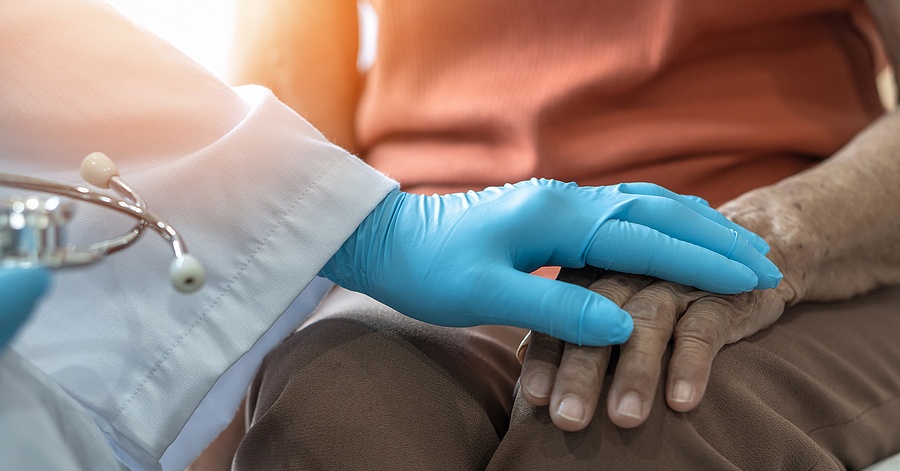Everything You Need to Know About External Hemorrhoids

Some of the worst hemorrhoid experiences are associated with external hemorrhoids. If you have one of these, you may find yourself plagued with pain, irritation and other uncomfortable symptoms.
As miserable as an external hemorrhoid can be, you might try to suffer through it in silence. There's no need to put yourself through that. The more you learn about hemorrhoids, the better you'll understand that this problem is common and treatable.
What is an External Hemorrhoid?
Hemorrhoids happen when rectal venous structures swell. That can happen if you strain too hard in the bathroom or otherwise place too much pressure on this part of your body.
You can get hemorrhoids inside your rectum or around your anal opening. If you have a hemorrhoid that you can see or feel on the outside of the anus, it's an external one.
Medical experts consider the dentate line to be the internal-versus-external transition point. Also known as the pectinate line, this line of demarcation is located about one-third of the way up the anus.
External Hemorrhoid Symptoms
The tissue near the anal opening can be quite sensitive, so it's common for an external hemorrhoid to cause pain. Even if yours doesn't hurt, per se, it may feel itchy or irritated. The discomfort may be worse when you are sitting.
An external hemorrhoid can also cause bleeding or mucus leakage. With a hemorrhoid present, you may not be able to clean yourself as well after a bowel movement, so you might end up with unsightly or unpleasant-smelling stains on your underwear.
You may be able to identify an external hemorrhoid by running your fingers over the area. It can feel like a small lump.
Thrombosed External Hemorrhoid
While a regular external hemorrhoid might be annoying but not critical, the situation can suddenly take a sharp turn for the worse. A blood clot can develop inside the hemorrhoid. This is known as a thrombosed hemorrhoid.
One telltale sign of a thrombosed hemorrhoid is pain that comes on quite quickly. Looking at the affected area in the mirror might reveal a lump with a bluish tint.
A thrombosed hemorrhoid usually feels most painful during the first 48 hours, but the discomfort can last for weeks. If you suspect that you've developed this condition, try to get an appointment with your doctor right away. A drainage procedure may help relieve the pressure, but it usually needs to be done within the first few days.
To learn more about thrombosed hemorrhoids and potential in-office treatment options, check out this video:
At-home Hemorrhoid Treatment
For other external hemorrhoids, you might be able to treat the problem at home by paying a bit of extra attention to your bottom and your bathroom habits.
First of all, try to make your toilet process as trouble-free as possible. Increase your fiber and water intake so that your bowel movements will be easier to pass.
Head to the bathroom as soon as your body signals the need, and don't spend extra time straining. Try again later if you're not able to go within a few minutes. Adopting these practices will help the current problem heal and may also prevent future occurrences.
You can soothe your anus as you wait for healing to happen. Try sitting in a shallow tub of water a few times a day. You can do this in the bathtub or purchase a sitz bath to place over your toilet seat. Three 20-minute soaks a day can help bring down the inflammation of a swollen, painful hemorrhoid.
At other times in the day, you might want to apply a cold pack. Ice is known for helping reduce inflammation.
There are topical creams and ointments for hemorrhoid treatment. These may offer pain relief and inflammation reduction. Witch hazel wipes are good for external hemorrhoid care as well. You can usually pair these products with oral pain relievers.
To improve your comfort level as you wait for your hemorrhoid to go away, sit on soft chairs or place a pillow on the seat.
Doctor Care for Hemorrhoids
Medical attention isn't only for thrombosed hemorrhoids. If a week of at-home care doesn't relieve your hemorrhoid problem, it's a good idea to schedule an appointment with your doctor. You should also have an exam if there's bleeding involved. That can be a symptom of several different conditions, some of which are more serious than others.
After diagnosing you with hemorrhoids, your doctor may suggest continuing with at-home care or moving on to surgical intervention, particularly if you've repeatedly dealt with thrombosed hemorrhoids. The most common surgical procedure for this condition is hemorrhoidectomy, which involves excising the affected tissue from the body.
Recovering from a hemorrhoidectomy can be painful. If you have internal hemorrhoids in addition to the external ones, your doctor may recommend treating the internal ones first. Sometimes, addressing internal hemorrhoids solves the external problem as well. Rubber band ligation is a minimally invasive procedure for getting rid of internal hemorrhoids.
After the symptoms of an external hemorrhoid go away, you may be left with a harmless skin tag. Your doctor can remove the tag through a quick in-office procedure.
Dealing with External Hemorrhoids
Pressure on the rectum can lead to an external hemorrhoid. If you develop this problem, it's time to treat your rear with extra care for the next few days. If the issue doesn't clear up soon, see a doctor for assistance. To locate an experienced colorectal physician with expertise in treating hemorrhoids, use our online Find a Doctor feature.
As with all medical issues, your physician is the ultimate source as to what procedure best fits your needs. Discuss all options and get a second opinion if you have any doubts. These articles are intended to be a source of general information only.
